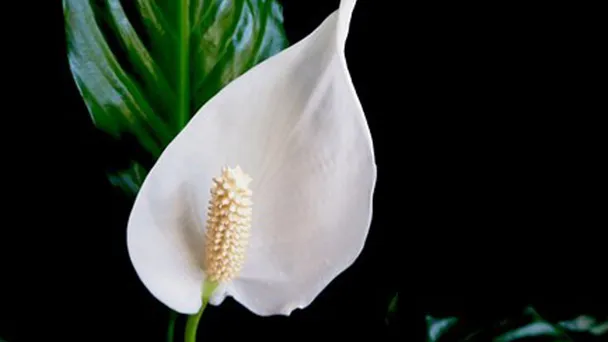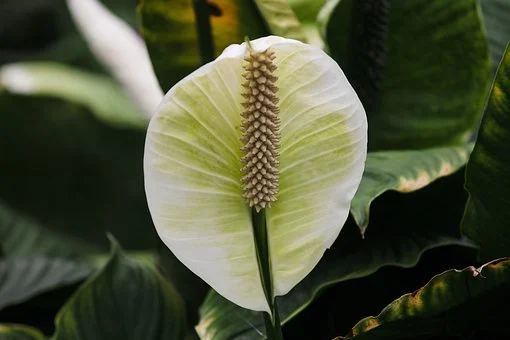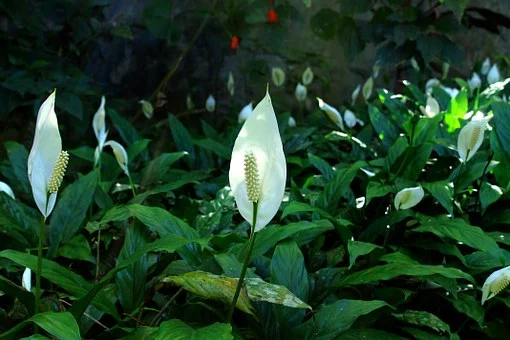How to Propagate Healthy Peace Lily
Written by Ivy
Feb 15 2023

Generally speaking, there are three ways to propagate Health Peace lily, but from the perspective of survival rate, we generally choose division propagation. And the division and seed propagation method for a healthy peace lily will be introduced below.
 Peace Lily can be planted in spring and autumn. August ~ October is the best time! Lily is a bulbous herb of Lilium in Liliaceae. Its stems are straight and straight, its leaves are green, its flower shape is strange, its color is elegant, and it is very popular. In short, peace lily is planted from November to March. It can be potted or planted in the field. The potted plant needs to be buried with a thickness of about 7cm. The flowers fall behind the normal management until the leaves wither naturally, then stop water, put the basin in a ventilated and cool place, and take it out and replace it with new soil at the end of November. Read More: Why Is My Peace Lily Not Blooming
Peace Lily can be planted in spring and autumn. August ~ October is the best time! Lily is a bulbous herb of Lilium in Liliaceae. Its stems are straight and straight, its leaves are green, its flower shape is strange, its color is elegant, and it is very popular. In short, peace lily is planted from November to March. It can be potted or planted in the field. The potted plant needs to be buried with a thickness of about 7cm. The flowers fall behind the normal management until the leaves wither naturally, then stop water, put the basin in a ventilated and cool place, and take it out and replace it with new soil at the end of November. Read More: Why Is My Peace Lily Not Blooming
We regularly check peace Lily every year. If you find that the branches of peace Lily are very short and very slender, it is necessary to carry out division propagation.
Read More: Why Do My Peace Lily Leaves Tips Turn Brown - Common Reasons
The root of peace lily bulb should be loosened slowly without pulling. Some small side buds will grow around the bulb, which are not fully mature. These immature side buds should also be pulled out to avoid consuming too much nutrients. Then we will cut off all the stems and leaves at the top of peace lily bulb, about one centimeter above the top of the bulb. Read more: Peace Lily Root Rot - Signs & How to Save
Peace Lily baby clusters need to be planted at an appropriate depth under the soil, about 10 ~ 15cm. The specific planting depth depends on the size of the whole bulb. If it is a particularly small peace Lily baby clusters, it is generally planted at about 3 ~ 5cm under the soil. For larger peace Lily baby clusters, it is necessary to plant deeper. (Read More: Peace Lily Turns Black - 10 Causes & How to Solve)
Peace Lily seeds likes to grow up in an environment of about 20 degrees Celsius. The best planting temperature is within this range, which can improve the budding rate. The budding rate of peace Lily seeds is not high, so the selection method of time is very important. Try to plant it in spring or autumn.
When planting peace Lily seeds, the selection of soil is also important. We should use soil containing humus. The smaller the pH value, the better. It is best to keep it between 6 and 7. Soil cannot be used intact. It is necessary to disinfect first to remove the bacteria inside. We can soak it with chlorothalonil, carbendazim and other drugs, wash it with water and dry it in a dry air exchange place. If everything is handled, you can choose the appropriate weather to plant peace Lily seeds.
Choose the right time to propagateMaterial neededHow to Propagate Peace Lily Division PropagationSeed PropagationFAQs about Propagating Peace LiliesAre Peace Lilies Self-pollinating?Can you Take a Cutting from a Peace Lily?Can you Propagate a Peace Lily in Water?
Choose the right time to propagate

Material needed
- A healthy grown peace lily plant with crowns
- A knife or pruning shears
- Newspapers or tarp to keep the area clean
- Small pots
- Potting soil
- Water
How to Propagate Peace Lily
Division Propagation
- Checking if your peace lily can be divided
We regularly check peace Lily every year. If you find that the branches of peace Lily are very short and very slender, it is necessary to carry out division propagation.
- Removal of the root ball from the pot
Read More: Why Do My Peace Lily Leaves Tips Turn Brown - Common Reasons

- Separating the clump
The root of peace lily bulb should be loosened slowly without pulling. Some small side buds will grow around the bulb, which are not fully mature. These immature side buds should also be pulled out to avoid consuming too much nutrients. Then we will cut off all the stems and leaves at the top of peace lily bulb, about one centimeter above the top of the bulb. Read more: Peace Lily Root Rot - Signs & How to Save
- Preparing and potting the baby clumps
Peace Lily baby clusters need to be planted at an appropriate depth under the soil, about 10 ~ 15cm. The specific planting depth depends on the size of the whole bulb. If it is a particularly small peace Lily baby clusters, it is generally planted at about 3 ~ 5cm under the soil. For larger peace Lily baby clusters, it is necessary to plant deeper. (Read More: Peace Lily Turns Black - 10 Causes & How to Solve)
- Post propagation care
Seed Propagation
- Harvesting Peace Lily Seeds
- Germinating Peace Lily Seeds
Peace Lily seeds likes to grow up in an environment of about 20 degrees Celsius. The best planting temperature is within this range, which can improve the budding rate. The budding rate of peace Lily seeds is not high, so the selection method of time is very important. Try to plant it in spring or autumn.
When planting peace Lily seeds, the selection of soil is also important. We should use soil containing humus. The smaller the pH value, the better. It is best to keep it between 6 and 7. Soil cannot be used intact. It is necessary to disinfect first to remove the bacteria inside. We can soak it with chlorothalonil, carbendazim and other drugs, wash it with water and dry it in a dry air exchange place. If everything is handled, you can choose the appropriate weather to plant peace Lily seeds.

- Post propagation care
FAQs about Propagating Peace Lilies
Are Peace Lilies Self-pollinating?
If peace lilies is planted outdoors, it will attract a lot of bees during flowering. Generally, they pollinate through bees. If it is planted indoors, we can pollinate manually if we want to better bear seeds. After pollination, peace lilies will fall and bear seeds slowly. In addition, even without artificial pollination, the pollen of stamens will fall onto the petals and can be pollinated, but the pollination rate of self-pollinating peace lilies will be lower. (Read More: How to Repot A Peace Lily)Can you Take a Cutting from a Peace Lily?
Peace Lily can be propagated by cutting, but the survival rate of cutting propagation is not very high. When cutting peace lily, we should choose robust flower branches with leaves, cut them and soak them in water for more than six hours, so that they can absorb enough water. Then prepare a suitable matrix, which can be perlite. When we are ready, we can insert peace Lily directly, water it in time, cover it with plastic film to keep warm and moisturize, and wait for rooting. However, the survival rate of peace Lily propagated by this method is not as high as that of division propagation.Can you Propagate a Peace Lily in Water?
In fact, peace Lily can also be propagated in water. It's also cleaner. It's good to put it on the desk or in the living room as an ornamental decoration.- Cultivation container
- Cuttings selection
- Change water
- Nutrient solution
Latest Updated
- 12 Amazing Peace Lily Benefits to Keep Your Garden Fresh!
- What Is The Best Soil For Peace Lily
- How to Propagate Healthy Peace Lily
- How Much Light Does a Peace Lily Required
- How Often And How Much to Water Peace Lilies
- Peace Lily Care: How to Grow & Care for Peace Lily Plants
- Why Is My Peace Lily Dying - 5 Reasons & How to Revive
- Peace Lily Root Rot - Signs & How to Treat
- Why Is My Peace Lily Not Blooming - Causes & How to Get Them Bloom
- How Long Do Peace Lilies Last - How to Make Them Live Longer
Popular Articles
- Winter maintenance of Antirrhinum Majus
- How to Grow Terminalia Mantaly Tree
- How to Grow and Care for Crossostephium Chinense
- How to grow Antirrhinum Majus in spring
- Peristeria Elata (Dove Orchid) Profile: Info & Care Guide
- Underwatered Snake Plant (Sansevieria Trifasciata) - Signs And How To Fix
- How to Care for Brazilian Jasmine Plant (Mandevilla Sanderi)
- Rosa Chinensis (China Rose): Plant Growing & Care Tips
- How to Grow & Care for Graptopetalum Purple Delight in Summer
- How to Care for Baby Sun Rose (Aptenia Cordifolia)